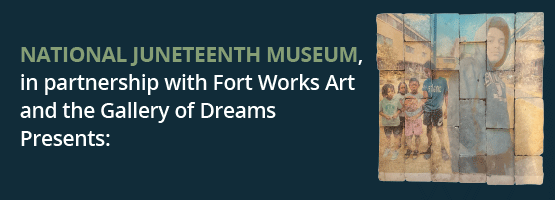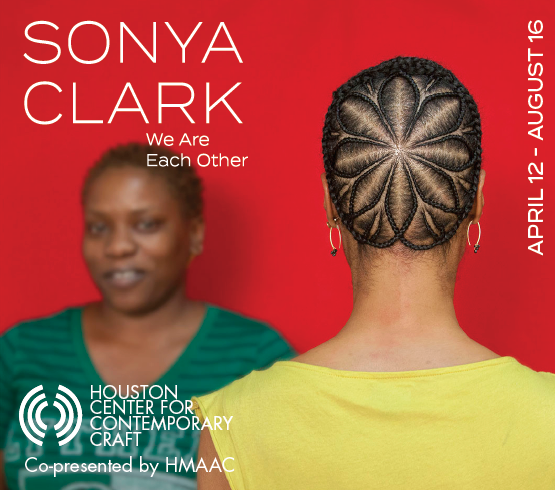Frances Stark hasn’t been this angry and disillusioned with the state of the world in a while—if ever. That’s evident in FOCUS: Frances Stark of the artist’s paintings on display at the Modern Art Museum of Fort Worth through January 9.
Lately that wandering thing is politics. And with this show she debuts a collection of recent political paintings.
That is especially unusual. She’s written books and essays, drawn, sketched and created performance and video artwork. While she paints, she doesn’t see herself as a painter.
“The show is unusual because I’m not a painter, nor an amazing crafty painter,” she said.
But for associate curator Alison Hearst, who organizes the museum’s FOCUS series which highlights contemporary artists, combining political themes with Stark’s lesser-known paintings aligns with her overall practice and interest in what she sees around her. In this case, that’s the dismal state of the world.
One painting, In a book commemorating Ed Ruscha’s 2005 American Pavilion I contributed an essay (alongside Joan Didion no less!) entitled Always the Same, Always Different, is an image of a hand with white glove holding that book, Course of Empire, set against a black background. The glove isn’t symbolic, but just seemed to fit the painting, Stark said. Yet just as a Michelin-grade restaurant presents a fine dining experience with snazzily dressed waiters bringing our meals with white gloves, the ritziest of galleries present work similarly.
With a white glove, the object becomes important. While in this case Stark’s book is indeed significant because only a limited amount printed, she’s also critiquing what is relevant, and how work is made relevant, in the art world.
Stark recalled being particularly pissed off while at an art and zine fair. She looked around, flabbergasted that the artists were not focused on current events. She remembers thinking, “what the hell is going on?”

1 ⁄6
Installation view, FOCUS: Frances Stark at The Modern in Fort Wort November 19, 2021 - January 9, 2022.

2 ⁄ 6
Behold Man (Nancy and Sluggo recto verso pendant pair), 2017. Ink and spray paint on canvas, diptych, panel 1 of 2. The Collection of Eleanor Hayman Propp.

3⁄ 6
Behold Man (Nancy and Sluggo recto verso pendant pair), 2017. Ink and spray paint on canvas, diptych, panel 2 of 2. The Collection of Eleanor Hayman Propp.

4 ⁄6
Frances Stark, Ian F. Svenonius's "Censorship Now" for the 2017 Whitney Biennial, Spread 2 of 8 (with gilded Acrylic on canvas.
Overall: 79 × 104 in. (200.66 × 264.16 cm).
Glenstone Foundation, Potomac, Maryland
31.2021.1.

5 ⁄6
Frances Stark, In a book commemorating Ed Ruscha's 2005 American Pavilion I contributed an essay (alongsi. Flashe, acrylic, gesso on canvas
Overall: 44 × 57 in. (111.76 × 144.78 cm).
Private Collection, New York
37.20201.1.

6 ⁄6
Frances Stark, panel from Black Flag, 2018.
Oil on canvas.
Overall: 72 × 372 in. (182.88 × 944.88 cm).
Courtesy the artist, Gladstone Gallery, Galerie Buchholz, and Greengrassi 35.2021.1.
In the verso panel, Nancy is peering inside Sluggo’s disorganized and dirty home. While his house is in clear disarray, he is contently reading a newspaper. “Behold Man!” is a commentary on media, distractions and consumption.
Nancy appears less emboldened in the four panel Black Flag from 2018, which stretches across two walls, with the gallery entrance in between. It punches you in the gut when you digest it. Set at one end of the all black canvas is a black and white American flag draped around a pole. At the other end is Nancy within a lit circle, lying in the corner, hands on her stomach. Her tongue is sticking out. She is disgusted.
“The exasperated Nancy in the spotlight is a stand-in for the artist on the global stage. She foregrounds today’s reality that publicity is a stand-in for cultural value,” Stark said.
While absent of text, Hearst said, the work is still narrative, to be read from left to right. In this exhibit, Black Flag bridges Stark’s politics and culture with paint.
Text-based works become cultural commentaries in Ivan F. Svenonius’s “Censorship Now” for the 2017 Whitney Biennial and the chilling 2019 Reading Mohamedou Ould Slahi’s Guantanamo Diary on the laptop by the fire not long before he was finally released after 17 years.
Both also express Stark’s continued frustration with the state of the world. But, as Hearst notes, “their texts, like the others she dedicates her labor to reproducing and setting before new audiences, reveal individual voices speaking their truths.”
—JAMES RUSSELL




